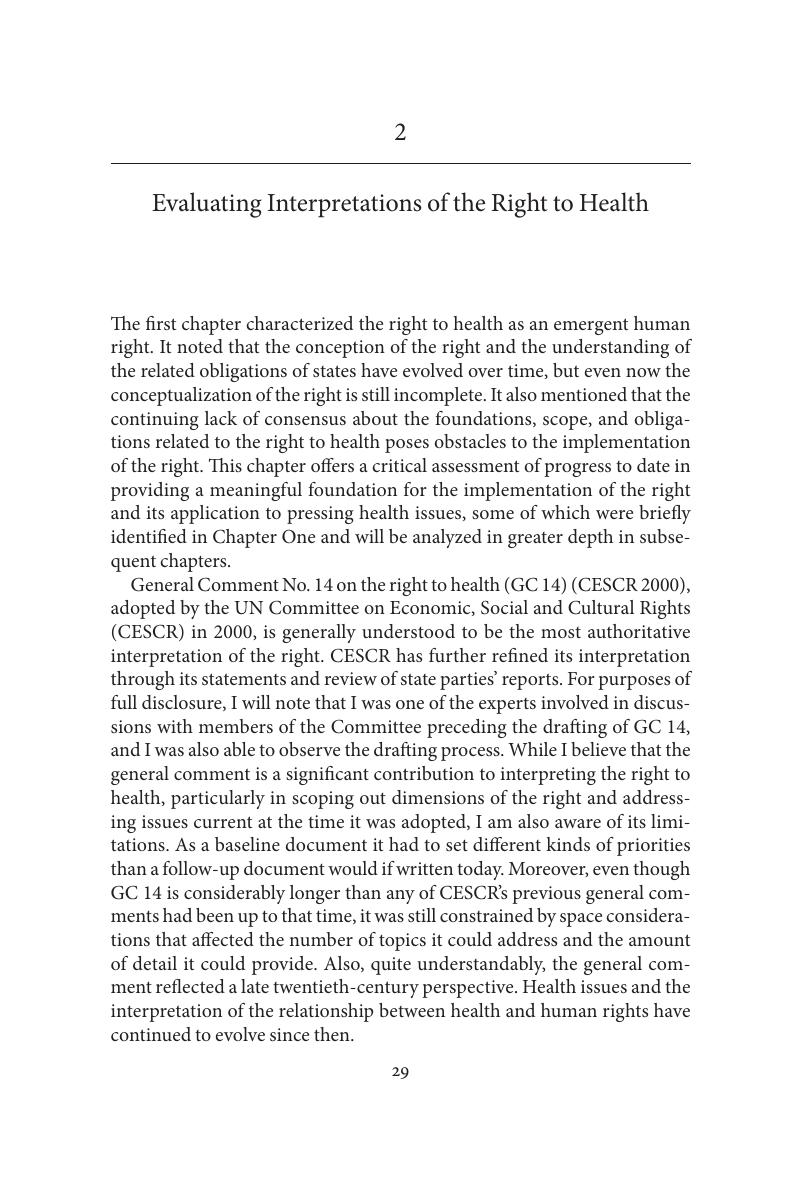Book contents
- Global Health, Human Rights, and the Challenge of Neoliberal Policies
- Global Health, Human Rights, and the Challenge of Neoliberal Policies
- Copyright page
- Dedication
- Contents
- Book part
- 1 The Right to Health as an Emergent Human Right
- 2 Evaluating Interpretations of the Right to Health
- 3 Health and Human Rights in the Neoliberal Era
- 4 Private Sector Provision, Health, and Human Rights
- 5 Globalization, Health, and Human Rights
- 6 Achieving Improved Access to Medicines
- 7 The Social Determinants of Health, Health Equity, and Human Rights
- 8 Right to Health Perspectives on Universal Health Coverage
- Index
- References
2 - Evaluating Interpretations of the Right to Health
Published online by Cambridge University Press: 05 April 2016
- Global Health, Human Rights, and the Challenge of Neoliberal Policies
- Global Health, Human Rights, and the Challenge of Neoliberal Policies
- Copyright page
- Dedication
- Contents
- Book part
- 1 The Right to Health as an Emergent Human Right
- 2 Evaluating Interpretations of the Right to Health
- 3 Health and Human Rights in the Neoliberal Era
- 4 Private Sector Provision, Health, and Human Rights
- 5 Globalization, Health, and Human Rights
- 6 Achieving Improved Access to Medicines
- 7 The Social Determinants of Health, Health Equity, and Human Rights
- 8 Right to Health Perspectives on Universal Health Coverage
- Index
- References
Summary

- Type
- Chapter
- Information
- Publisher: Cambridge University PressPrint publication year: 2016

